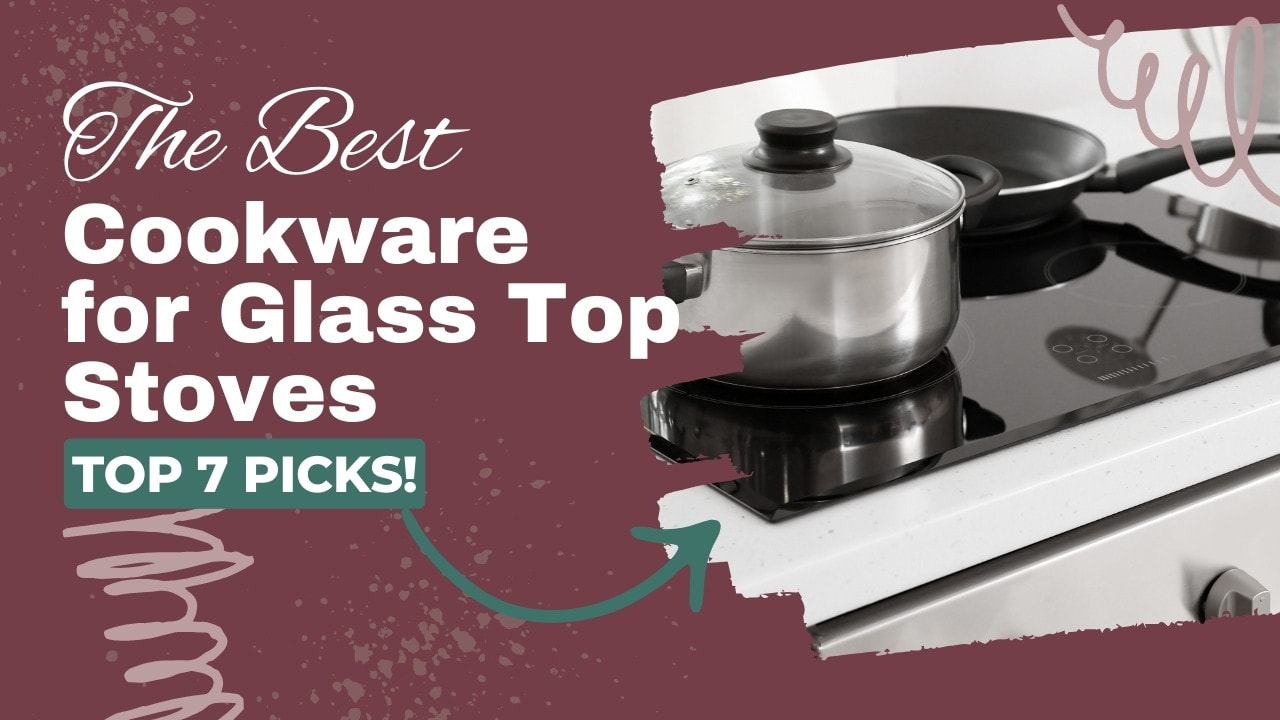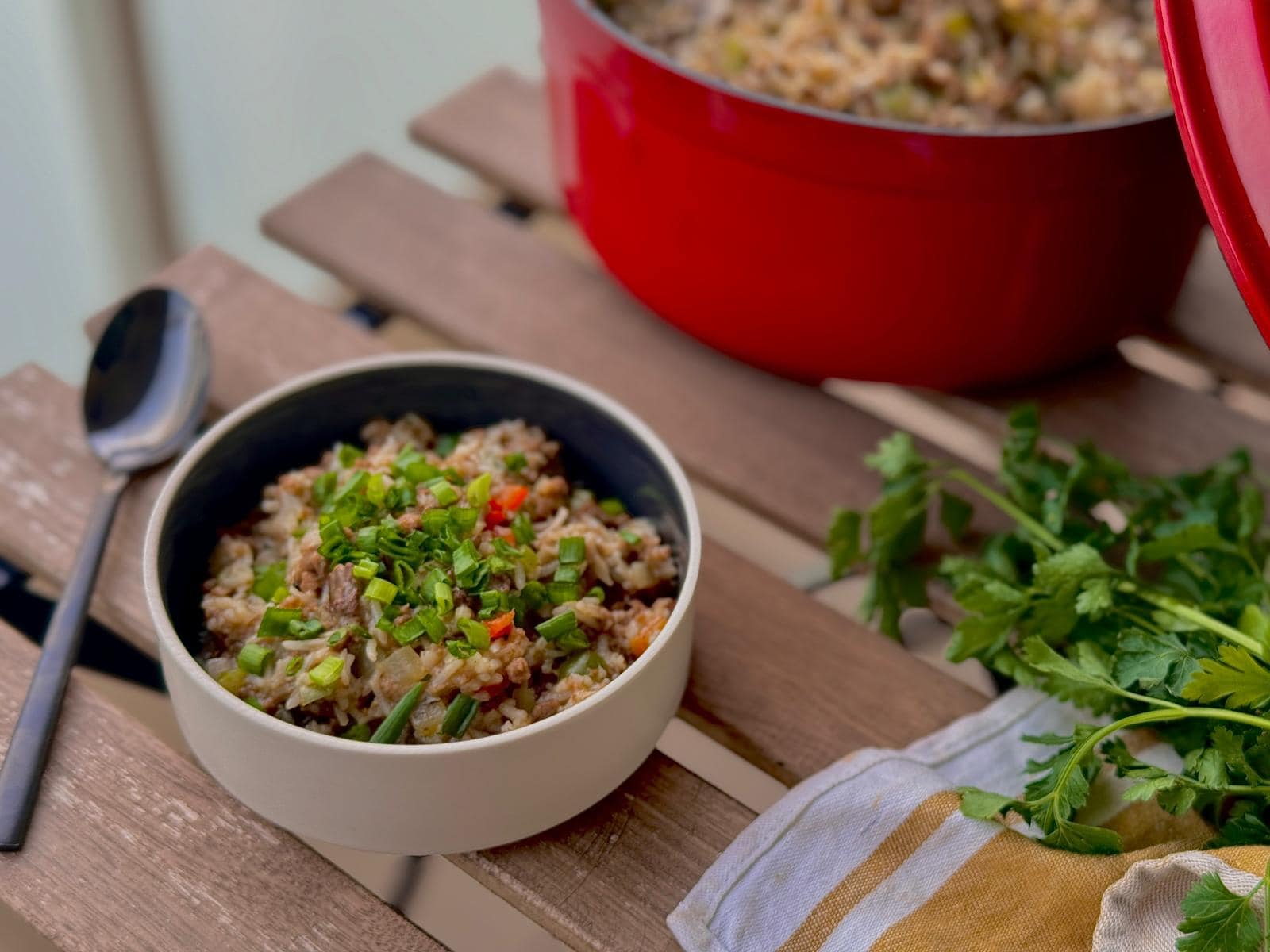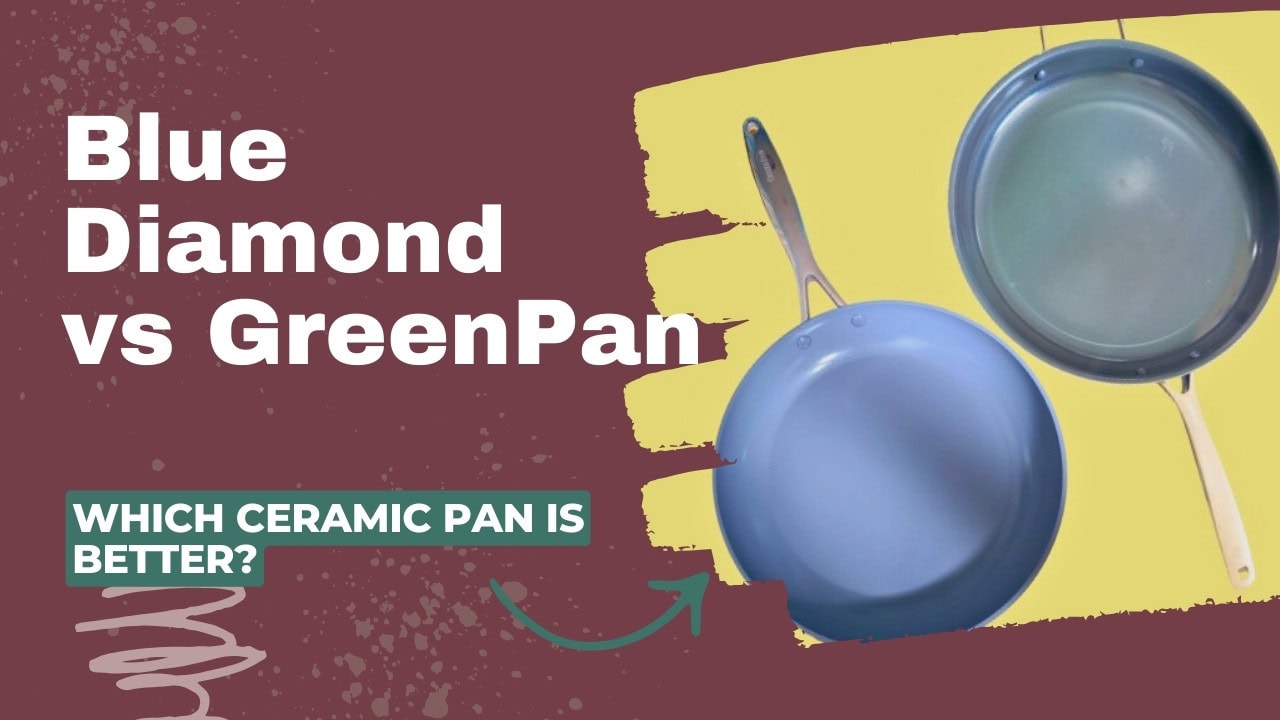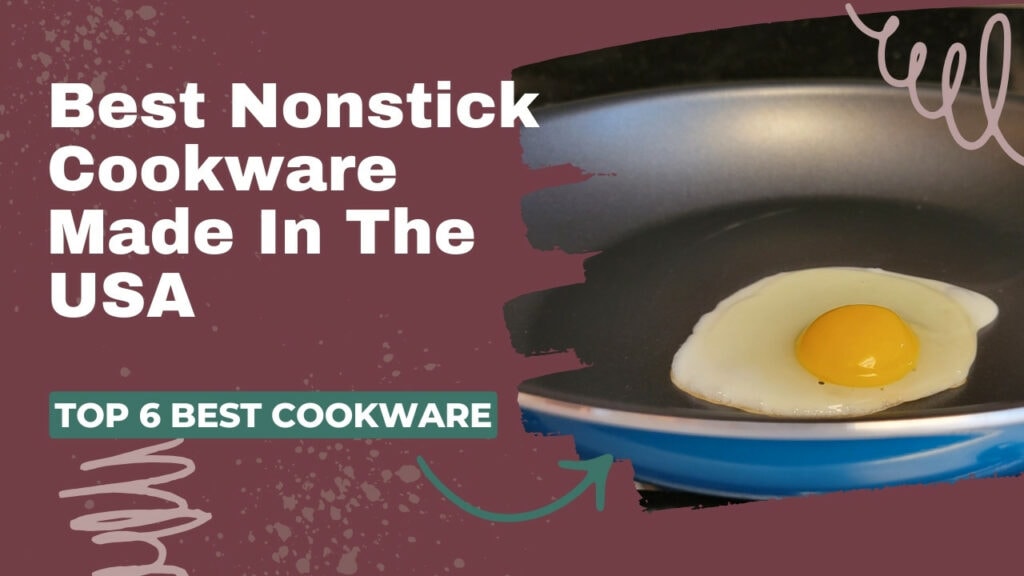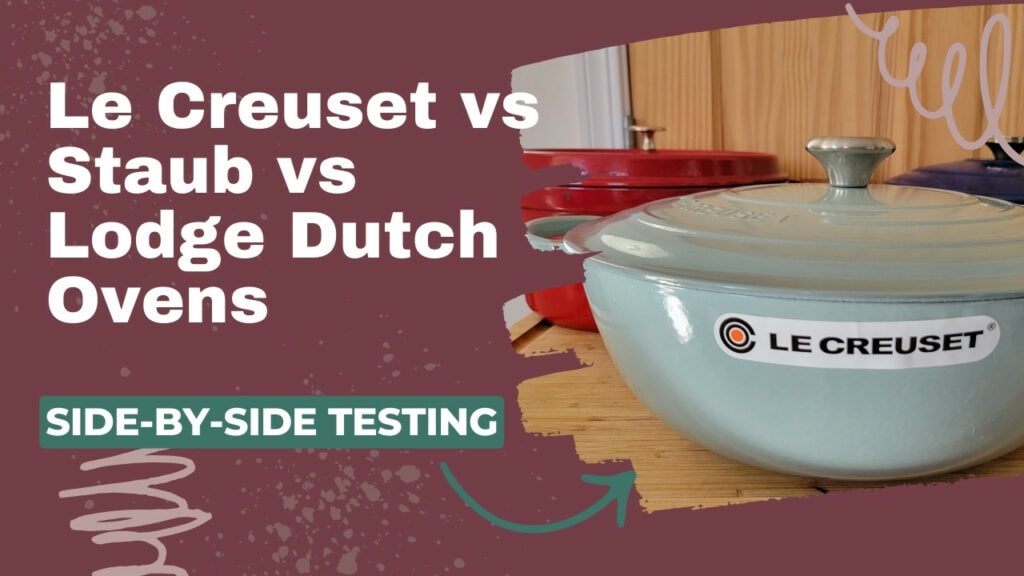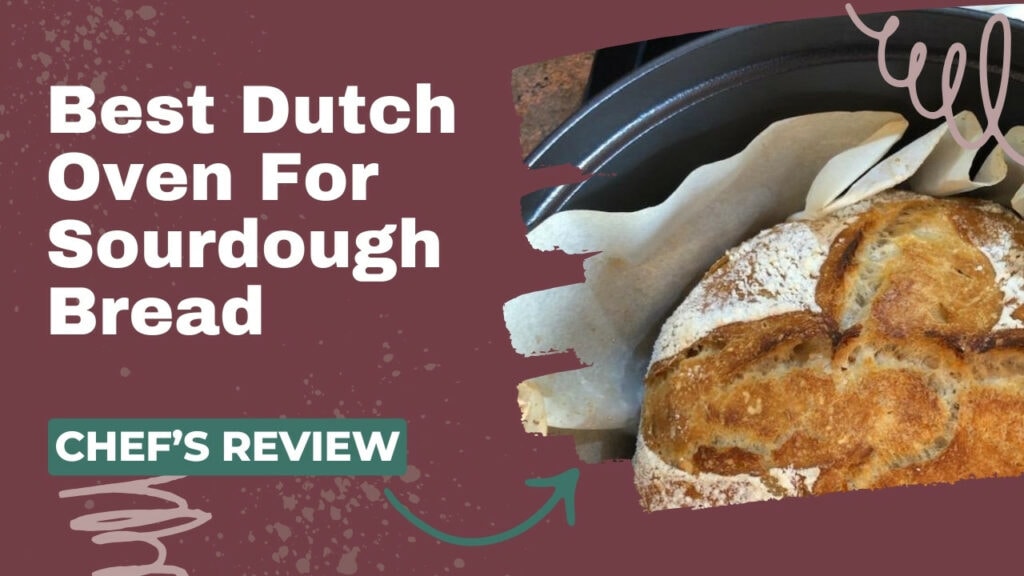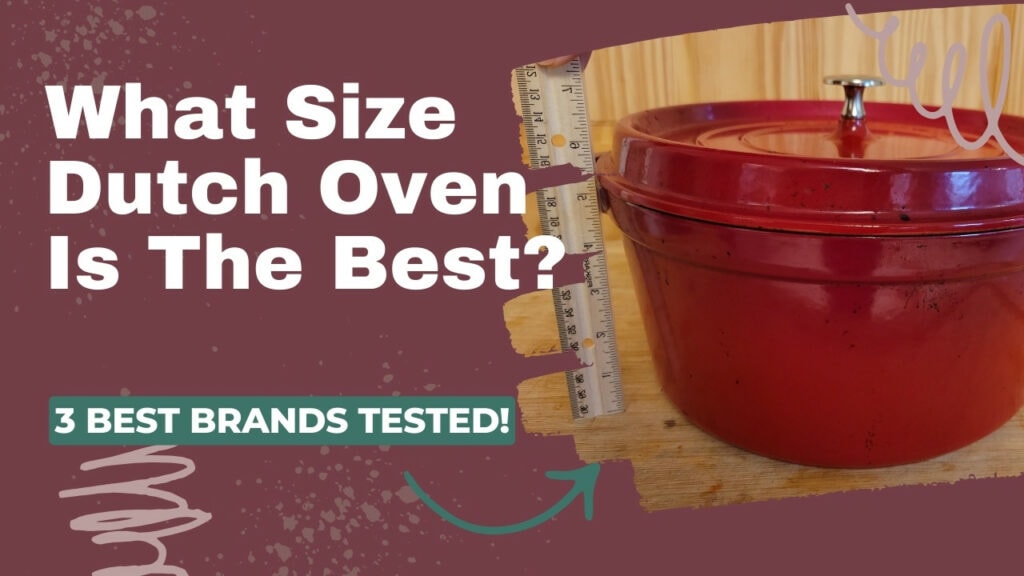Glass stoves are an excellent addition to any kitchen. They’re easy to clean, stylish, and efficient. But not all types of cookware are suitable for use these modern cooktops. You need to pick a pan with a flat base that makes firm contact with the smooth glass surface – without scratching it – for successful meal prep on a glasstop stove.
What are the Best Cookware Sets for Glass Stoves?
My absolute favorite cookware set for a glass stove is the Caraway Nonstick Ceramic Cookware Set. These pots and pans have a smooth aluminum base that spreads heat evenly and doesn’t scratch a glass stove’s surface. Plus, they’re lightweight with a sleek design that comes in a variety of colors.
Best Pots and Pans for Glass Top Stoves
Best Overall: Caraway Nonstick Ceramic Cookware Set
This gorgeous Caraway set is my top pick for glass stovetop cookware. The aluminum base provides fast and even heat distribution, while the ceramic coating makes the set easy to clean and low maintenance. The aluminum’s superior heat distribution means you can use these pots and pans on burners of various sizes, even if they don’t match the size of the pan’s base.
High burner heat will reduce the life of the ceramic coating on these pans, but don’t worry about that. The alumunium conducts heat so well that you won’t need to turn your burners to high! Turning the heating element to medium is plenty for most applications.
You can use this collection for various cooking methods, including braising, searing, and frying. The walls of the fry pans and the pots are nice and high to prevent splashes while frying or searing.
One more thing that stood out to me about this set is its carefully designed packaging. It comes packed in a plastic rack that you can use to store the cookware in your kitchen, complete with a lid holder.
Despite all the advantages of this set, the four pots and pans included may not be enough for big families or a multi-course meal. If you need to fry different ingredients at the same time, you may need to switch your pans frequently. Plus, the price is high for just four pans. You can find bigger sets for the same price and with decent quality.
Quick Overview:
Pros
Cons
Best Ceramic Aluminum Set: Blue Diamond Cookware Ceramic Nonstick
Many people concerned about “forever chemicals” in traditional nonstick cookware are turning to ceramic as a (probably) safer bet. This Blue Diamond ceramic nonstick cookware set is made of aluminum with a ceramic coating, offering high heat conduction and even heating across the surface of the pans.
The forged bottoms create full contact with the heating surface, making it perfect for glass stovetops. Plus, the heavy-duty forged bottom can withstand the higher temperatures of glass ranges and resist warping under direct heat.
Just don’t pour cold water in the pan when it’s hot! This quick change from hot to cold can create tiny cracks in the ceramic surface, known as “thermal shock.”
The signature Diamond technology may add to the cookware’s durability and longevity – though our testers aren’t totally sure it’s not a gimmick. The technology involves adding diamond crystals to the ceramic coating, ostensibly making it tougher and more scratch-resistant.
But, gimmick or not, the surface feels sturdy and looks gorgeous thanks to the diamond particles. Like with any other ceramic cookware, you can expect 1-5 years of gentle use from this cookware before it loses its non-stick quality. You should also avoid the dishwasher, high heat, and using metal utensils on the surface if you don’t want to shorten the lifespan of this collection.
Quick Overview:
Pros
Cons
Best Stainless Steel Cookware Set: Cuisinart MultiClad Pro Triple Ply
Stainless steel is among the most time-honored cookware materials thanks to its durability, relatively non-toxic components, and versatility. This 12-piece Cuisinart set offers these features at a reasonable price. It’s compatible with all cooktops, including glass and induction.
The tri-ply brushed stainless steel in this set consists of a layer of aluminum between two layers of stainless steel. This design creates even heat distribution throughout the vessel, not just the bottom. The stainless steel handles are long and remain cool during cooking.
The lids have a tight-fitting design that helps food remain hot for longer. Like other stainless steel products, this set isn’t 100% non-stick. So, you need to pre-heat it to the right temperature to prevent sticking. The water drop test is a the best way to nail that optimum temperature for adding your food.
This cookware collection includes pots and pans in various sizes that allow you to prepare a multi-course meal. You may have issues with the sizes, though. For example, the 8” and 10” skillets aren’t big enough to sear large steaks – or multiple ones at a time.
Quick Overview:
Pros
Cons
Best Non-Stick Set: Calphalon 10-Piece Pots and Pans Set
Nonstick pots and pans are ideal for no-nonsense cooking since they don’t need priming or preheating. You don’t need to add much oil. The surface is nonstick and gives you an easy food release. And this Calphalon set does the job perfectly well.
The hard anodized aluminum base is more warp-resistant than regular aluminum pans and perfect for glass stovetops. Plus, it’s made of medium-gauge aluminum, which means it’s lightweight won’t smash your glass stovetop. Still, because it’s hard anodized, it doesn’t look or feel flimsy or cheaply made.
The handles are ergonomic, long, and wrapped in silicone to prevent heating and offer an easy grip.
However, if you cook for a big family, you may need larger pans. The 8” and 10” frying pans are perfect for 2-4 people.
Quick Overview:
Pros
Cons
Best Nonstick Pan: T-Fal Ultimate Hard Anodized Nonstick Fry Pan
If you need a single pan for fast and easy frying on your glass stovetop, this T-Fal non-stick pan is for you. The hard anodized aluminum means it can withstand the usual wear and tear of everyday use. Plus, aluminum has a high capacity for transferring and maintaining heat. So you can experience even cooking with no hot spots with its perfectly flat bottom.
The exterior is also made of hard anodized aluminum, making it scratch-resistant. It’s sturdy and warp-resistant, perfect for use on glass stovetops.
The pan features T-Fal’s proprietary technology, Thermospot. It’s a round indicator in the center of the pan, which shifts colors when it reaches approximately 375 degrees. It signals when the pan is ready so you can add the ingredients for the best cooking results.
Quick Overview:
Pros
Cons
Carbon Steel Pan: OXO Obsidian
Do you miss cast iron's durability, performance, and superior heat distribution since you can’t use it on your glass stove?
Don’t fret! This carbon steel pan offers the same benefits while being lighter in weight, making it suitable for glass stovetops.
Plus, it comes pre-seasoned, eliminating the hassles of priming your pan before the first use. It may not be 100% nonstick initially, but it builds a patina over time. Still, you need to season it three or four times to make it truly nonstick.
The size may not be enough for large families, though. Although it’s stated as 12”, it’s the external diameter of the skillet. So, the cooking diameter is smaller, although the entire size is 5qt. However, it may not be a big drawback since the surface area of your pan needs to fit your stove’s cooking area. Depending on the heating element’s diameter, this size may be the best you can get.
Quick Overview:
Pros
Cons
Best Dutch Oven for Glass Stoves: All-Clad D3 3-Ply Stainless Steel Dutch Oven
Finding a perfect Dutch oven for glass stovetops is challenging. Most reputable companies make Dutch ovens with cast iron, which is not generally recommended for gas stovetops. But this All-Clad stainless steel Dutch oven can be a perfect replacement.
It’s made of tri-ply 18/10 stainless steel, offering excellent heat distribution. The tight-fitting domed lids retain heat nicely, making them perfect for cooking stews, pot roasts, or braised meat. It returns moisture and flavor to the pot, retaining your food’s taste.
It has a sleek mirror finish, which keeps the Dutch oven as gorgeous as new. However, it can scratch easily. It also means that you can’t put it in the dishwasher. The manufacturer recommends hand washing with a mild detergent.
Quick Overview:
Pros
Cons
Note: Although this product is great, it’s on the pricier side. Here’s a cheaper alternative:
Cooks Standard Dutch Oven Casserole with Lid. It’s made of brushed 18/10 stainless steel with an aluminum disc at the base for better heat conduction.
Buying Guide
A glass stove is a type of electric range that may be confused with an electric stove or an induction range. Different types of cookware perform best on different types of cooktops.
What cookware won’t work on a glass stove?
If you have a glass stovetop, you want to steer clear of heavy cookware with rough bottoms. The worst culprit is cast iron. Cast iron skillets can break or scratch the glass if you slide it along the cooktop.
Glass stovetops can take a while to heat up and don’t change temperatures quickly, so thick slow-heating iron pans don’t perform well on glass anyway.
Let’s first clear the air regarding glass and electric stoves.
What’s the Difference Between a Glass and an Electric Stove?
A traditional electric stove features burners made of coils inside metal tubing, and the cookware directly sits on the coils. When you turn on the stove, the coil heats up and turns orange or red.
A glass stove has the same mechanism; the only difference is that the coil sits under the glass top. This design has advantages and disadvantages, which I’ve summarized below:
| Glass Stovetop | Electric Coil Stovetop |
|---|---|
| Indirect heating | Direct heating |
| Glass can protect cookware | Coil can damage cookware |
| Easy to clean | Hard to clean as crud collects under the coils |
| The stovetop can shatter or scratch | Coils are more durable |
| Sleek design | Not so elegant |
What about Induction Cooktops?
An induction cooktop is a different kind of stove altogether. It does use electricity and have a solid flat top, like a glass stove. But it cooks using magnetic heat transfer rather than direct heat.
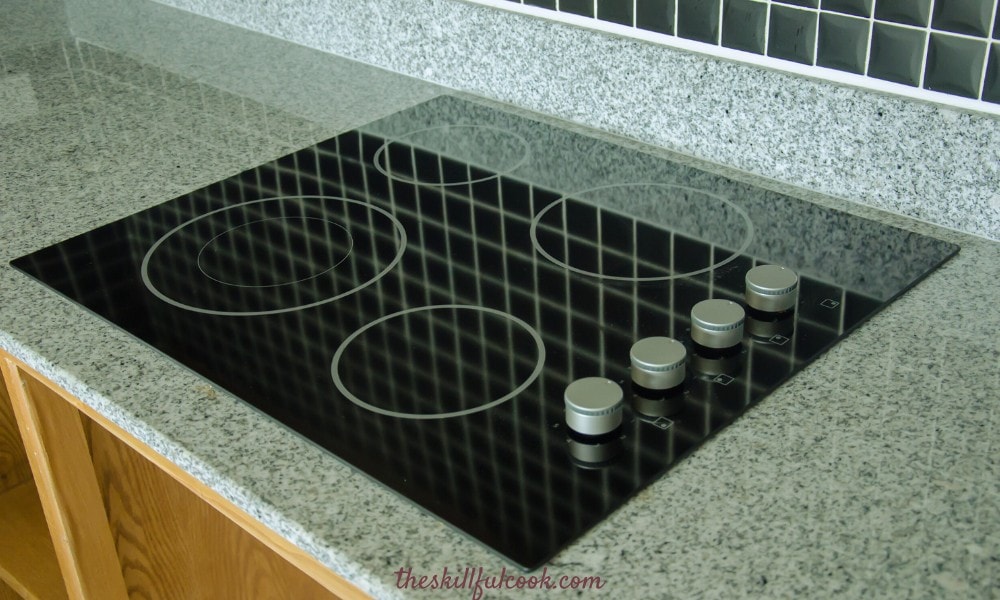
Aluminum pans are the best for glass stovetops, but they won’t work on induction cooktops at all unless equipped with a base plate of ferrous metal. If you have an induction cooktop, check out our cookware recommendations in this guide.
Which Material to Choose?
The biggest difference between one pan and another is the material it’s made from. Not every material is compatible with glass cooktops. And the material can affect the quality and taste of your dishes.
Since glass stoves have a layer of glass between the heating element and your pan, they offer a bit more insulation than an electric coil stove. But they still get very hot. So you must choose materials that don’t warp or scorch under direct heat.
Let’s have a look at the best cookware materials for glass stovetops:
Stainless Steel
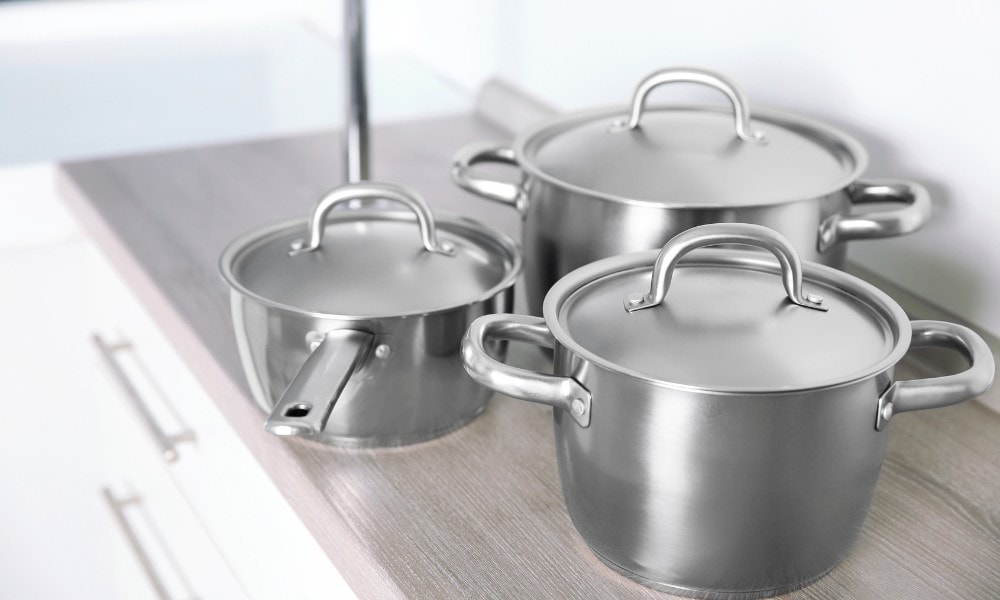
Stainless steel is one of the best materials for glass stoves. It has great heat retention, although it heats up slowly. Look for “fully clad” 3-ply and 5-ply stainless steel cookware has aluminum or copper cores that distribute heat evenly and fast.
Impact-bonded stainless steel cookware has this sandwiched design only at the bottom – or has an aluminum plate stuck on to the base– leaving the sides made of pure stainless steel which doesn't conduct heat well.
Related article: Best Budget Stainless Steel Cookware
Nonstick (PTFE) Coated Aluminum
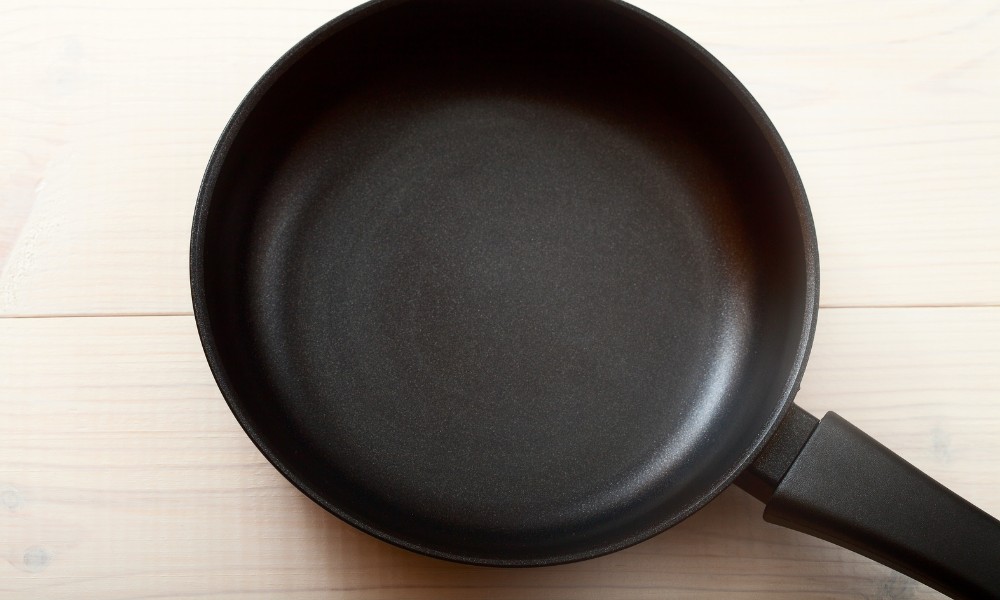
Most nonstick cookware has an aluminum core covered with layers of a hydrophobic polymer called PTFE (Teflon). Aluminum is lightweight and a great heat conductor, making nonstick cookware great for glass cooktops. The coating, however, is controversial.
Teflon coatings can release toxic fumes if overheated. And, since glass cooktops can get so hot, overheating can happen quickly. Add in the superior heat transferability of aluminum, and your nonstick pans can overheat in seconds.
So you need to watch the heat carefully when cooking with nonstick pots and pans. Keep the temperature low or medium to have more control over cooking. This may prolong your cooking time a bit, but it prevents the aluminum core from warping and keeps toxic fumes at bay.
If you buy aluminum cookware, look for hard-anodized aluminum for superior warp-resistance. If the base of an aluminum pan warps, it won’t distribute heat evenly and may slide off the cooktop’s surface. Stainless steel and hard anodized aluminum cores are superior options that are more durable and warp-resistant.
Related article: Best Hard Anodized Cookware
Copper
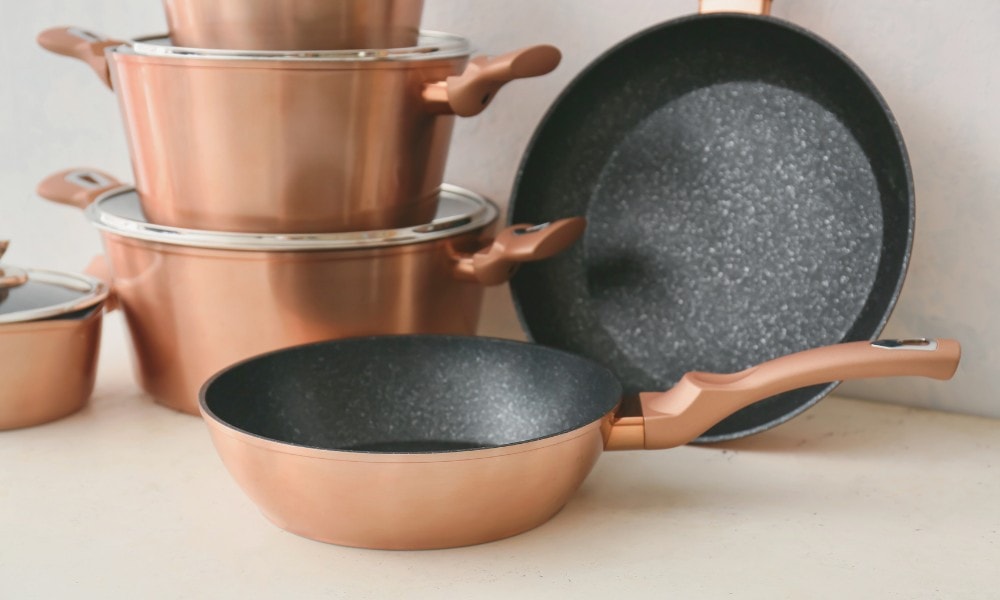
Copper is a coveted cookware material praised for its high thermal transferability and responsiveness. However, it’s not the best choice for glass cooktops.
Copper isn’t warp-resistant and can damage easily under the high heat of glass stoves. Plus, when you turn down the heat on your glass stove, it takes a long time for the glass surface to cool down. This means you can’t benefit from your cookware’s responsiveness.
Besides, premium-grade copper cookware is expensive. Thus, glass cookware may not help you get the best out of your copper cookware.
Related article: Best Authentic Copper Cookware
Cast Iron
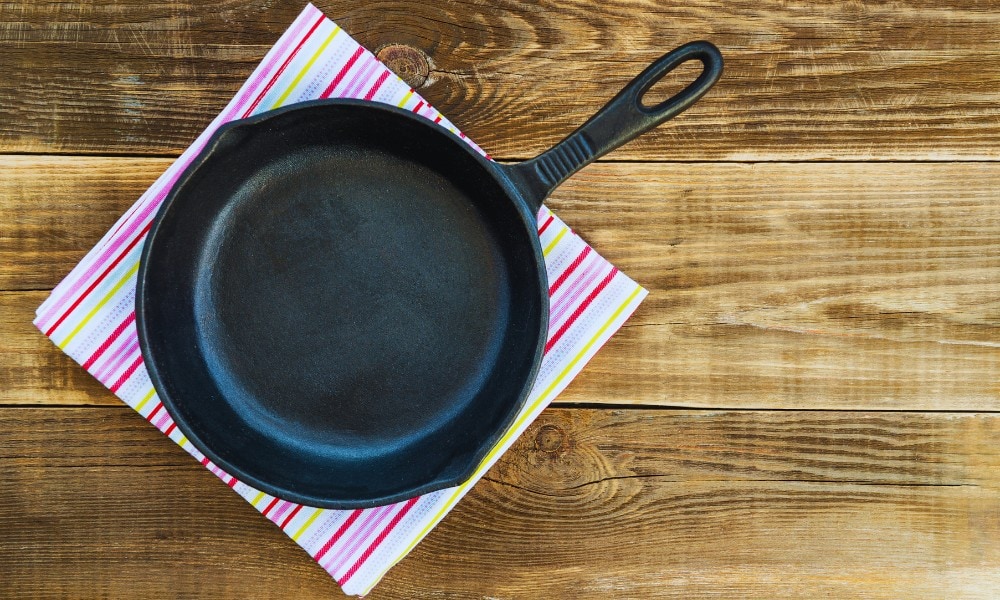
Speaking generally, cast iron is one of the best materials to cook with, thanks to its high heat retention and warp resistance. But cast iron isn’t friendly to glass stoves. It’s heavy, and its rough bases can scratch or shatter even tempered glass.
If you get cast iron cookware, you must handle it gently. Don’t slide the cookware across the glass top or drop it carelessly.
Enamel Cast Iron
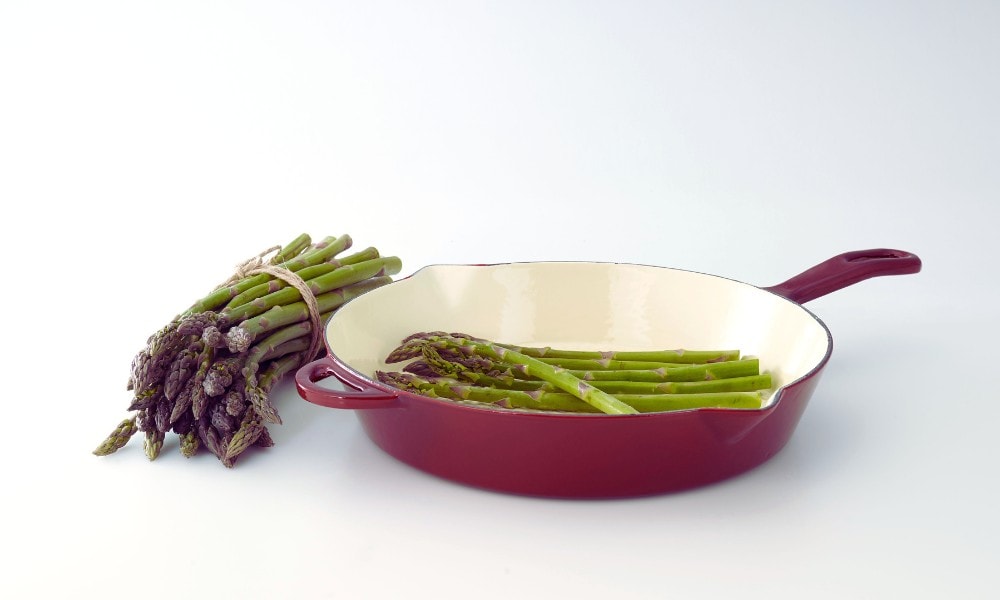
With similar drawbacks as cast iron, enamel cast iron is not the best option for glass stovetops. It features a porcelain ceramic coating on top of the cast iron. This makes it nonreactive (so it won’t transfer iron to your food) and semi-nonstick, but the intense heat of glass stovetops can damage the glazed enamel. It’s just as heavy as regular cast iron, too.
Related article: The Best Enamel Cast Iron Cookware
Carbon Steel
If you’re like me, you look for a way to bring the culinary magic of a cast iron pan into your kitchen – even if you have a glass cooktop. Carbon steel is your answer. It cooks just like cast iron without the drawbacks.
Carbon steel is cast iron’s lightweight cousin, perfect for glass stoves. It’s warp-resistant and lightweight, so it won’t break the glass. But it’s semi-nonstick and needs seasoning to become fully nonstick.
Other Considerations
Of course, you should consider other factors besides material when choosing cookware for glass stovetops. Here are the most important ones:
Size
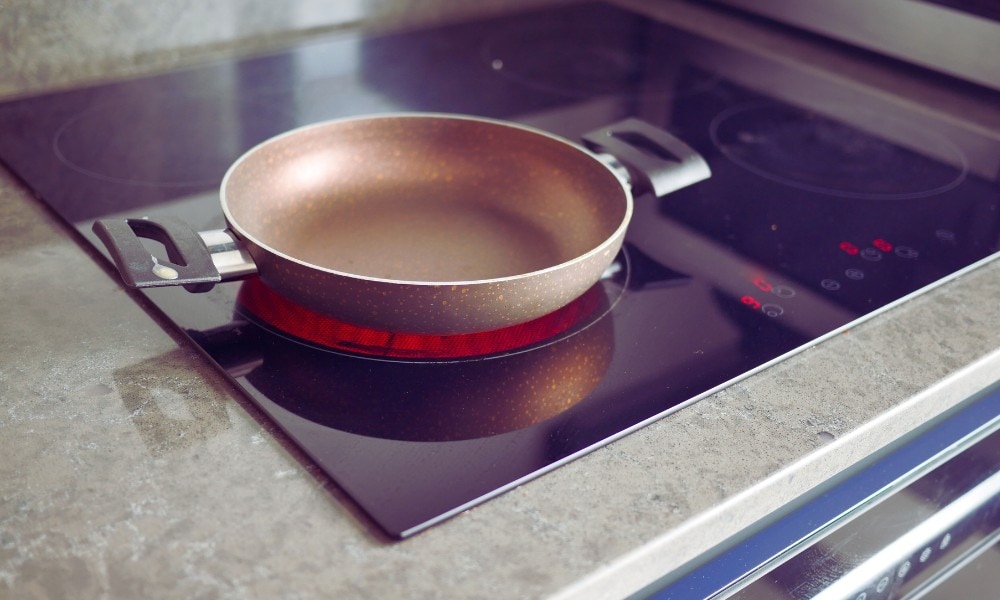
As mentioned, burners on glass cooktops metal coil under the glass surface. For best performance, match the diameter of a pan’s base to the diameter of the heating element.
If the heating element is smaller than the cookware’s base, the perimeter of your pan will be cooler than the center, leading to uneven cooking.
Flat Bottom
This is a crucial factor. Check the bottom of the cookware to ensure it’s completely flat. Warped or domed bases of cookware vessels like woks won’t make full contact with the heating element and won’t cook efficiently on a glass range.
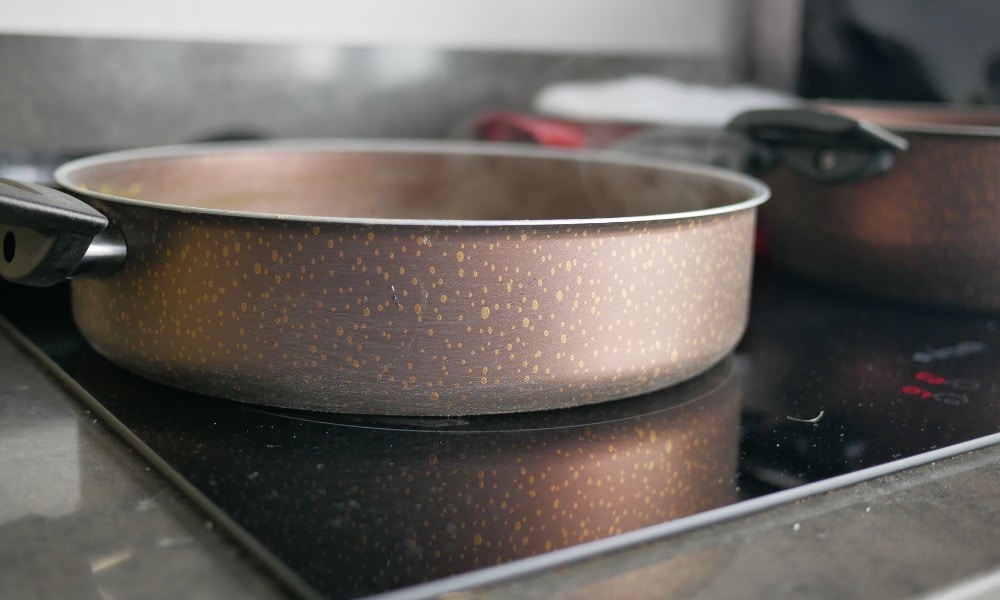
Safety Concerns
Pretty much everyone wants toxin-free cookware that doesn’t leach chemicals into your food, right? Different people have different opinions on what makes non-toxic cookware, but cast iron and stainless steel are the usual recommendations.
Since cast iron isn’t a good match for glass cooktops, that leaves you with stainless steel – or maybe ceramic-coated aluminum.
Frequently Asked Questions
What Pans Can You Not Use on a Glass Cooktop?
You can’t use pans with domed bases since they don’t make full contact with the glass cooktop. As a result, this cookware doesn’t heat evenly. Rough bases are also a no-no since they scratch the glass surface.
Is it Okay to Use Cast Iron on a Glass Stove?
Cast iron isn’t ideal for a glass stove. It’s heavy and has a rough bottom, which can damage the glass surface. Use carbon steel instead. It’s lighter while offering the same benefits as cast iron.
Can You Use Stainless Steel Pans on a Glass Stove?
Stainless steel is one of the best materials for glass stovetops. It’s lightweight, warp-resistant, and a great heat conductor. Use fully clad stainless steel to get efficient heat distribution.
Conclusion
The best cookware for glass cooktops should have a smooth base that’s strong enough to prevent warping under high heat.
#1 Recommendation: Caraway Nonstick Ceramic Cookware Set
Read Next: What Pots and Pans Should Not Be Used On Glass Stove Tops?

